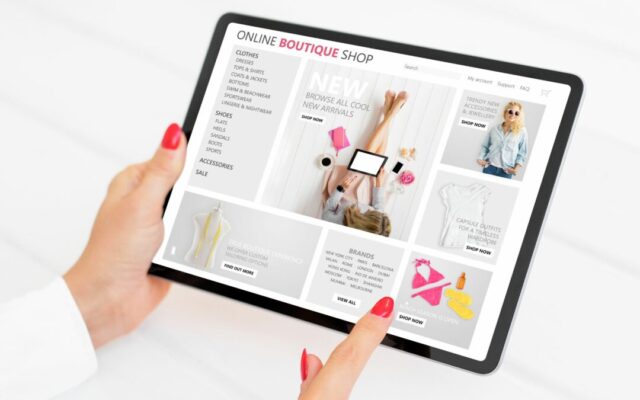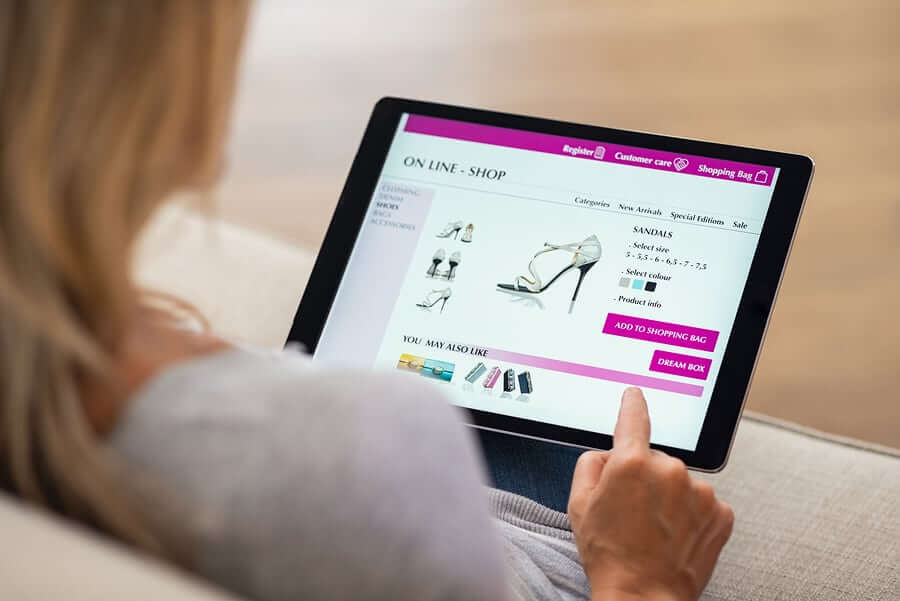An e-commerce product page is crucial for driving conversions and sales. It’s not just a place to showcase products; it’s an opportunity to engage customers, provide essential information, and encourage them to make a purchase. Here’s how to create a conversion-optimized product page that effectively captures your audience’s attention and converts visitors into buyers.

Table of Contents
Toggle1. Craft Compelling Product Titles
Your product title is the first thing potential customers will see. Make sure it is:
- Descriptive: Clearly convey what the product is, including essential details like brand, model, and key features.
- SEO-Friendly: Incorporate relevant keywords to improve search engine visibility, but avoid keyword stuffing.
- Concise: Keep it brief while ensuring that it provides enough information to inform the customer.
Example:
Instead of “Sneakers,” use “Men’s Lightweight Running Sneakers – Breathable Mesh, Size 10.”
2. Use High-Quality Images
Images are critical for online shopping since customers can’t physically touch or try products. Follow these tips for effective product images:
- Multiple Angles: Show the product from various angles and perspectives.
- Zoom Functionality: Allow users to zoom in for a closer look at details.
- Contextual Images: Include lifestyle images that showcase the product in use, helping customers visualize how it fits into their lives.
- Video Demonstrations: Consider adding product videos to highlight features and usage.
3. Write Engaging Product Descriptions
A well-crafted product description can significantly impact conversions. Aim for descriptions that are:
- Informative: Include details about the product’s features, benefits, and specifications.
- Persuasive: Use persuasive language to highlight how the product solves a problem or enhances the customer’s life.
- Scannable: Break up text with bullet points, headers, and short paragraphs to make it easy for users to skim.
Example:
Instead of a generic description, provide specifics like:
- “Made with breathable mesh for all-day comfort.”
- “Lightweight design enhances your running performance.”
- “Available in multiple sizes and colors.”
4. Incorporate Customer Reviews and Ratings
Social proof is a powerful motivator for online shoppers. Incorporate customer reviews and ratings on your product page by:
- Displaying Ratings: Show an average star rating prominently.
- Highlighting Reviews: Include a mix of positive and constructive feedback to build trust.
- Encouraging User-Generated Content: Ask customers to upload photos of themselves using the product, which can enhance credibility.
5. Optimize Pricing Information
Pricing plays a critical role in the purchasing decision. Here’s how to present pricing effectively:
- Display Original and Sale Prices: If applicable, show the original price alongside the sale price to highlight savings.
- Show Value: Consider including information about the product’s value, such as “Free shipping on orders over $50” or “Buy one, get one 50% off.”
- Transparent Pricing: Clearly outline any additional costs, such as shipping fees or taxes, to avoid surprises at checkout.
6. Create a Clear Call to Action (CTA)
Your call to action should guide users towards completing their purchase. Make your CTA:
- Prominent: Use contrasting colors to make the CTA button stand out.
- Action-Oriented: Use persuasive language, like “Add to Cart” or “Buy Now,” to encourage clicks.
- Accessible: Ensure the CTA is visible without scrolling (above the fold) and appears multiple times on the page.
7. Streamline the Checkout Process
A complicated checkout process can lead to cart abandonment. Simplify the experience by:
- Minimizing Steps: Aim for a one-page checkout or as few steps as possible.
- Guest Checkout: Allow customers to purchase without creating an account.
- Auto-Fill Options: Use browser detection to suggest address or payment information where possible.
8. Ensure Mobile Optimization
With the rise of mobile shopping, it’s vital to ensure your product page is mobile-friendly. Focus on:
- Responsive Design: Make sure the page layout adapts to different screen sizes.
- Fast Loading Times: Optimize images and minimize scripts to enhance page speed.
- Easy Navigation: Ensure buttons and links are easily clickable on mobile devices.
9. Utilize Trust Signals
Building trust is essential for converting visitors into buyers. Include trust signals such as:
- Security Badges: Display SSL certificates and payment security icons.
- Return Policy: Clearly outline your return policy to reassure customers.
- Customer Service Information: Provide contact details or live chat options for customer support.
10. Test and Analyze
Finally, continually test and analyze your product page’s performance. Use A/B testing to try different elements, such as:
- CTAs
- Images
- Product descriptions
Monitor metrics like conversion rates, bounce rates, and time on page to identify areas for improvement.
Conclusion
Building a conversion-optimized e-commerce product page is an ongoing process that combines compelling visuals, informative content, and strategic design elements. By focusing on your customers’ needs and continually refining your approach, you can create a product page that not only attracts visitors but also converts them into loyal customers. Start implementing these tips today and watch your conversion rates soar!


No responses yet